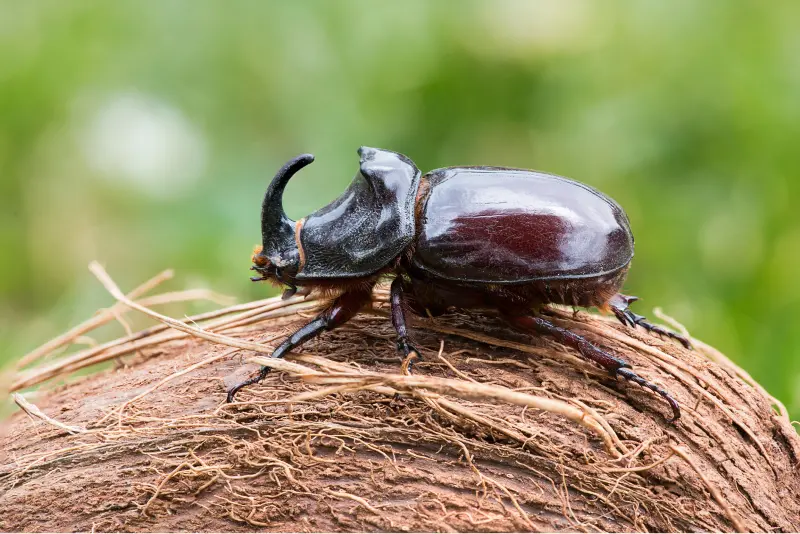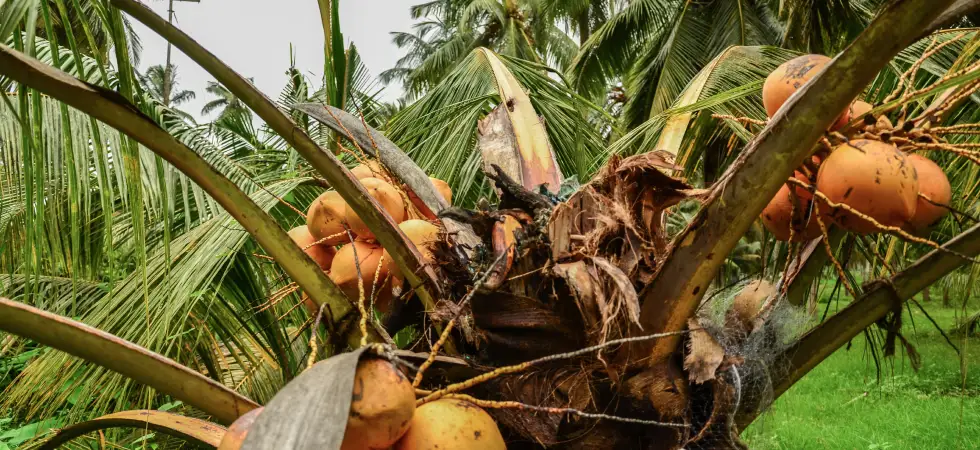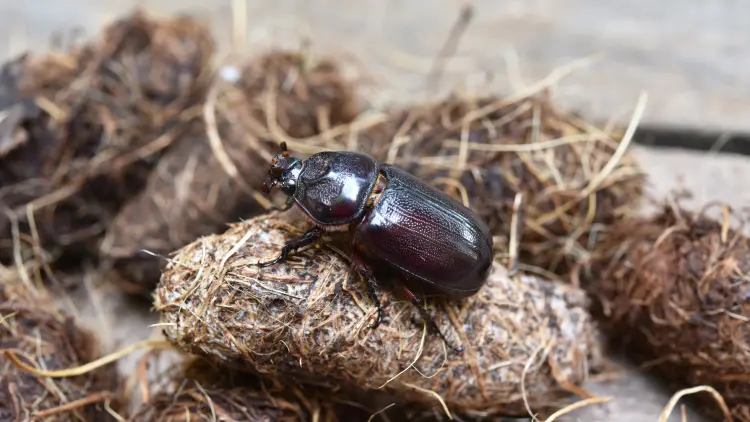Mililani | Waipahu | Kailua | Kaneohe | Kapolei
If you’ve ever seen a coconut rhinoceros beetle (CRB), you probably won’t forget the encounter; these are the largest beetles you’ll find in Hawaii. These beetles aren’t just unsettling to look at – they’re also very hazardous to several native plants. Sandwich Isle Pest Solutions’s pest control services are essential to controlling them. Using an approach that focuses on prevention as well as extermination, Sandwich Isle Pest Solutions is here to help get the CRB population under control.

Dangers of Coconut Rhinoceros Beetles in Honolulu
CRBs were first introduced to Honolulu in 2013. They are native to Southeastern Asia and are an invasive species that can cause catastrophic damage to various crop plants, such as coconuts, sugar cane, and bananas. They breed quickly and are voracious eaters, so they can easily devastate a crop – or destroy a native tree.

Signs of Coconut Rhinoceros Beetle Damage
If your trees are infested with CRBs, you may notice any of the following symptoms:
- Boreholes in palm trunks. CRBs dig into palm trees to drink the juices inside.
- Palm fronds cut away in a distinctive V pattern. These are signs of hungry beetles at work.
- “Scalloped” edges on palm fronds. Same as above.
- Overall decline in tree health. There are several potential causes for this, many of which are pest-related.
- Grubs. The larvae of this species are white grubs ranging from 2.5 to 4 inches in length – or even more. You are most likely to find these in undisturbed piles of organic material.
Need help identifying a potential CRB? Check out our informational page here. Luckily for you, these bugs are extremely eye-catching at 2 inches in length; the next-biggest beetle you’re likely to encounter in Honolulu, the oriental flower beetle, is roughly half its size. Dung beetles have slightly more resemblance to CRBs, but are much smaller, at about ⅓ their size. Other identifying features, such as the prominent horn on the front of the CRB’s face, may not even be necessary to pick one out of a crowd!
How to Deter Coconut Rhinoceros Beetles
The most important part of reducing the CRB population in Honolulu is to eliminate their breeding grounds. CRBs lay their eggs in green waste, mulch, compost piles, and more, so it’s important to deal with yard debris properly; instead of composting in your yard, bring your green waste to an official disposal site. Treating infested trees with pesticides and netting is an important step in handling infestations in progress, but the best treatment is preventing them from reproducing.

Coconut Rhinoceros Beetles Professional Pest Control Services in Pearl City HI
Serving Pearl City HI
